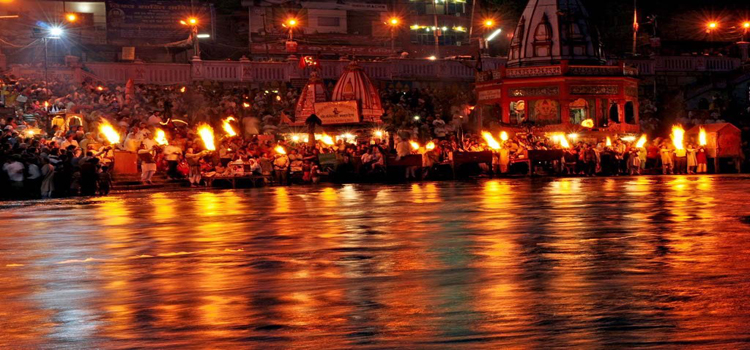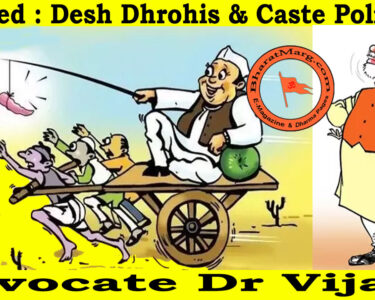“If you chant this mantra continuously for fourteen days … .. if you do so , your wish will be realized “ pronounced the guru.
The disciple set up a small hut outside the humdrum of the village and did the penance; day and night without any let up for thirteen days ….but felt a little tired, the tedium, due to no visible signs about the results.
Forfeiting the sacrament, the monk set off for the village. A voice stopped him as he entered the village… a singing voice full of sarcasm teasing him “Why do you leave when the deserved pleasure is at hand ?”
Stung for a second at his stumble, the monk decided to seek the voice .which led him to a doorstep .The old woman who responded to his tapping, was surprised to see a recluse at her house. Bowing in salute, she begged for the purpose.
The hermit said, “I want to see the person with that sweet voice “. “ No sir, ascetics like you should not come here please “the old lady protested saying “this is a place of a prostitute”.
“No madam, It is this magic voice that saved me from falling into an abyss. I do want to see her.. I want to offer my respects to her, please “pleaded the hermit.
Walking on beauty, the village belle came out slowly and hesitatingly. The monk went round her with folded hands, prostrated before her; in voice trembling, said his prayers and respectfully thanking her, he retreated.
The visit if the monk caused a great change of heart in the young woman. She left the house and came to Kasi. Resolving firmly not to ever leave Kasi, she hired a small boat house and started on a life of asceticism. The people attracted by the cloistral life the young woman led, started venerating her. But she stubbornly refused to meet anybody. She even hung a tableau in front of her house proclaiming.” I was a prostitute; please do not bow before me “But it had no effect.. The devotees thronged her boat house.
Years later on a particular day, she announced her end one day and with everyone watching in welling tears, breathed her last in the same boathouse that that she lived in for many years.
This is but one example of the numerous mystics who abound the shores of Ganga, the River.
The bountiful nature and the perseverant industry of man are perhaps the testimony for the history of the River’s fame and name. It is only after the great Guptas and Mauriyas and the mighty Moguls established themselves on the shores of Ganga that they could conquer and rule over the rest of Bharat.
It required lot of bloodshed for the Peshwas of Pune and the English who came surreptitiously through sea to realize this fact. This is also the basis and inspiration for Ravivarma to create his time-defying paintings as well as the sculptures of Mahabalipuram.
The self proclaimed agnostic Nehru wished his ashes be dissolved in the Holy Ganga.
Ancient lore of this country has plenty to offer about Ganga :
Gangotri, the snowy mountain lies at 4500m high at the southern part in the Himalayan range allegorically described by Poet Kalidasa as the laughter of Lord Shiva.
Ghomukh, the icy glazier lies just above the Gangotri. It is from here that the black colored Bhagirati appears. A temple for Ganga Mata is on the shore of Bhagirati.
At Devprayag, the black Bhagirati gushes from the west and the white Alaknanda hurtling down through canyons from the east mix and Ganga starts flowing from here.
The fierce Ganga pierces the Himalayas, turns southwest to reach Hardwar. At Hardwar and Hrishikesh , the ascetics performing penance and the ashrams too are countless. At these two places fresh hot delicious food is available at both times of the day under the auspices of many endowments.
In the evening people light small mud lamps on a leaf and devoutly float them on Ganga. These floating lamps mimicking in the thick frightening cold darkness appear as soft scattering of light eluding perhaps that with faith there is always hope even in times of despair. It is a sight to behold, not possible for a commoner to describe.
Kanpur, a business centre, is situated on the banks of Ganga as it flows from Hardwar fertilizing the thick fields. As it flows further on its journey, Ganga turns east towards to meet Yamuna the river separating the states of Uttar Pradesh and Haryana, at Prayag ( Allahabad).
It is believed that the mystic river Saraswati too joins these at Prayag. Hence the place gets the name “Triveni Sangam ”.
Kumbh Mela, an auspicious event that occurs every twelve years is celebrated here with sadhus from all over the country and elsewhere come in millions to attend.
Next in the itinerary of Ganga is Kasi . Two rivulets Varuna on the east and Asi on the west forming boundaries to Kasi, merge with Ganga at Kasi. So Kasi is also called Varanasi.
There are 18 bathing places or ghats as they are called in the holy city of Kasi where, it has been the faithful belief of the devout Hindu for thousands of years that it is ordained on him to bathe and perform rites for one’s dead predecessors .Harischandra and Manikarnika are two most important ghats in Kasi.
It is belived that Kasi is mahasmasan ie the holiest of holy crematorium ; if one is cremated here , he does not get to be reborn ie there is no rebirth , he attains moksham. As one dies, Hindu shastras hold firm that Lord Paramasiva chants the holy name of Rama in his ears.
Many ardent Hindus hope and wish their end happens at Kasi; they try their best to make it to Kasi as they near their end.
Leaving Kasi, Ganga then embracing many small tributaries in its fold and touching the boundary of Bengal and the Rajmahal hillocks, turning south, off 20 miles from Ghaur , a historic ruind city, Ganga breaks into many small rivulets that form an estuary..
This estuary starts nearly 200km from the Bay of Bengal. Padma, one of the prime branches flowing southeast, joins with the great Brahmaputra, creates a wide estuary called Meghna and joins the Bay of Bengal at Naokhali.
There are many branches in the west, Hoogly being the well known. The famous city of Kolkata is on the banks of this river. The renowned Dakshineswara Kali temple, where sage Ramakrishna worshipped is here.
Many holy rivers in India are highly venerated by devout Hindus. These holy rivers are part and parcel of the Hindu religion . Bathing in them, living near them are the desires of Hindus. Such rivers get further greatness and purity by being associated and called by the name of Ganga.
All purification ceremonies start with a holy bath. All these baths are called Ganga snan. Any thirst quenching water is considered reverentially as Ganga Amrith by Hindus.
Bal Kanda in Valmiki Ramayan relates many incidents associate with Ganga as narrated by sage Vishwamithra to Rama and Laksmana.
Praised by all the holy scriptures of the Hindu religion as one river which cleanses the mis – and mal deeds of humans and purifies them and gives them wisdom and eternal happiness Ganga the River occupies a very high and holy place and is a representative of all the Indian rivers.
Written by Dravida Maayai Subbu along with Sri Rajagopalan Venkatachary and Song by Vaishanvi Dilipan





1 Comment